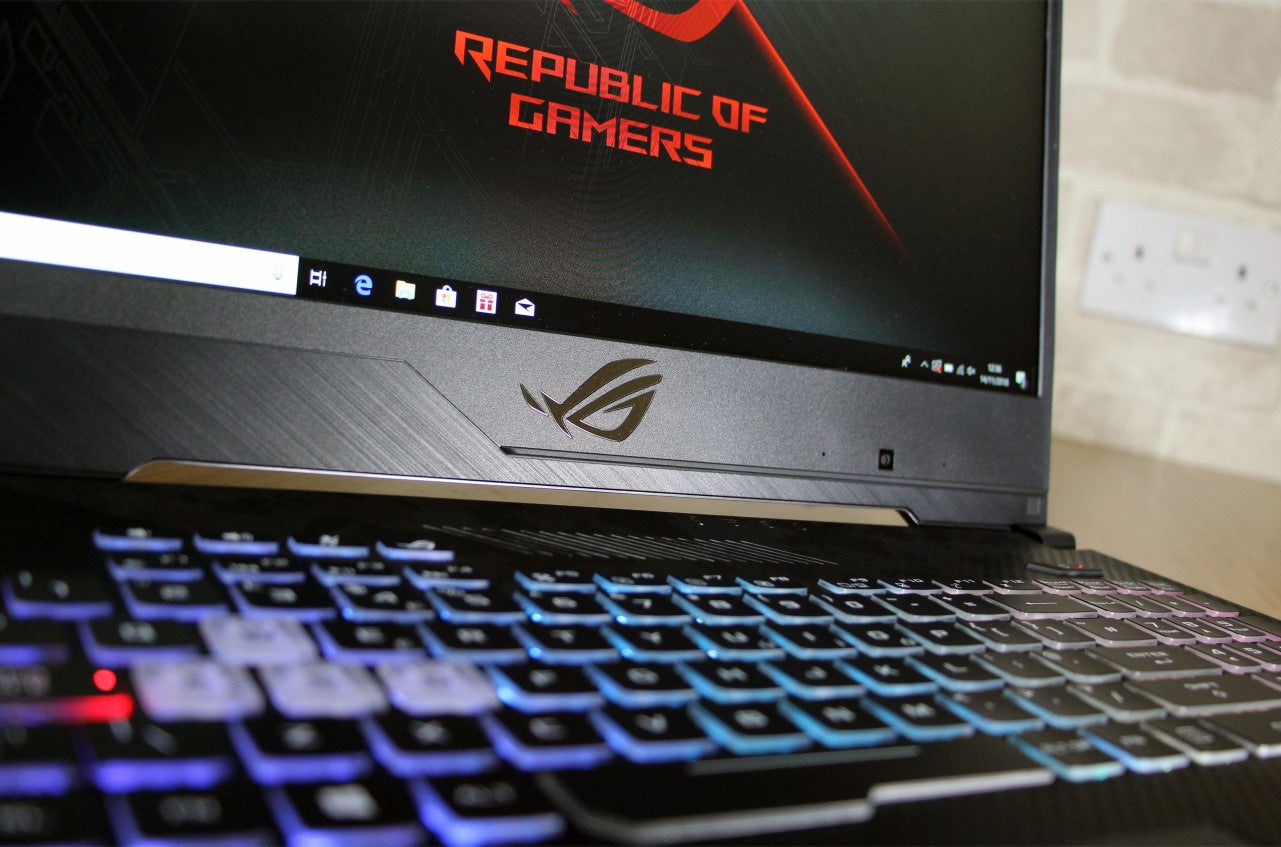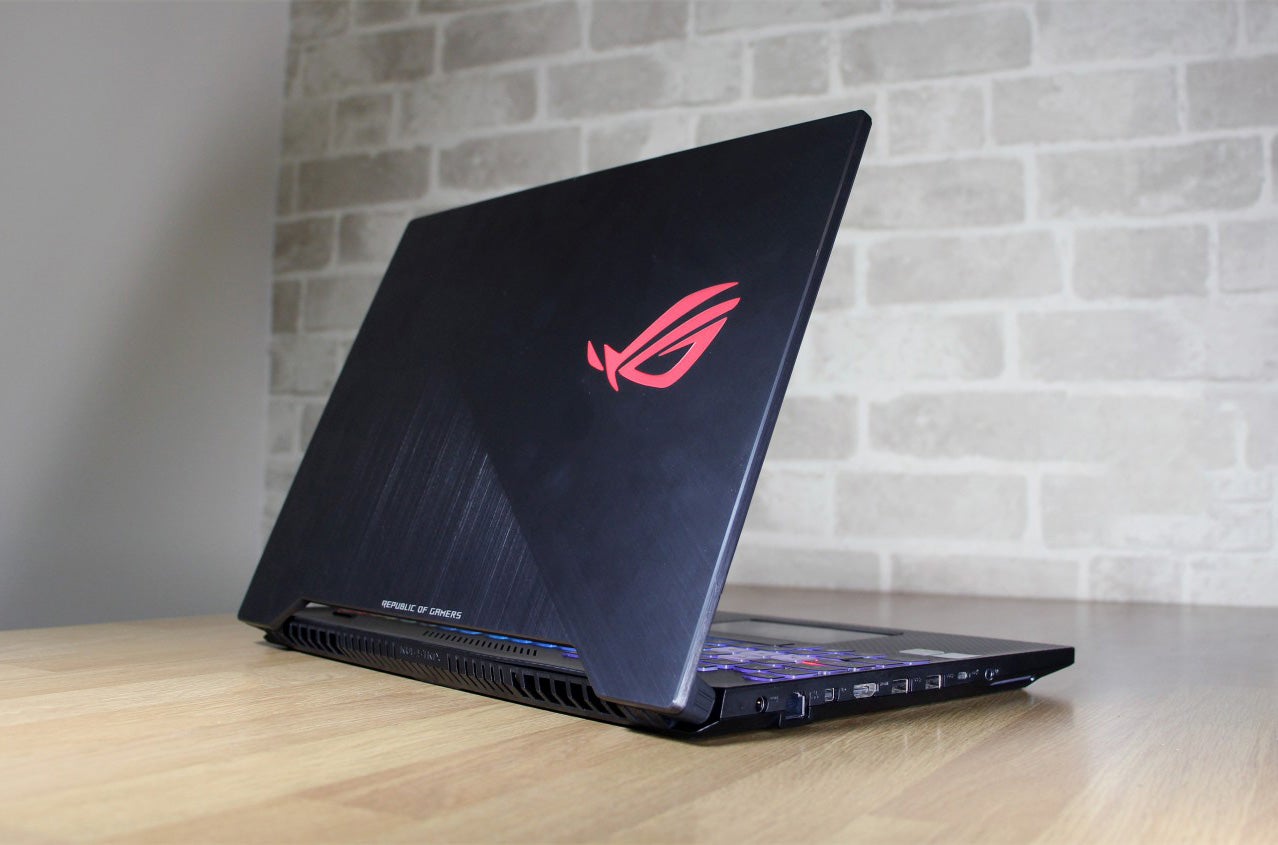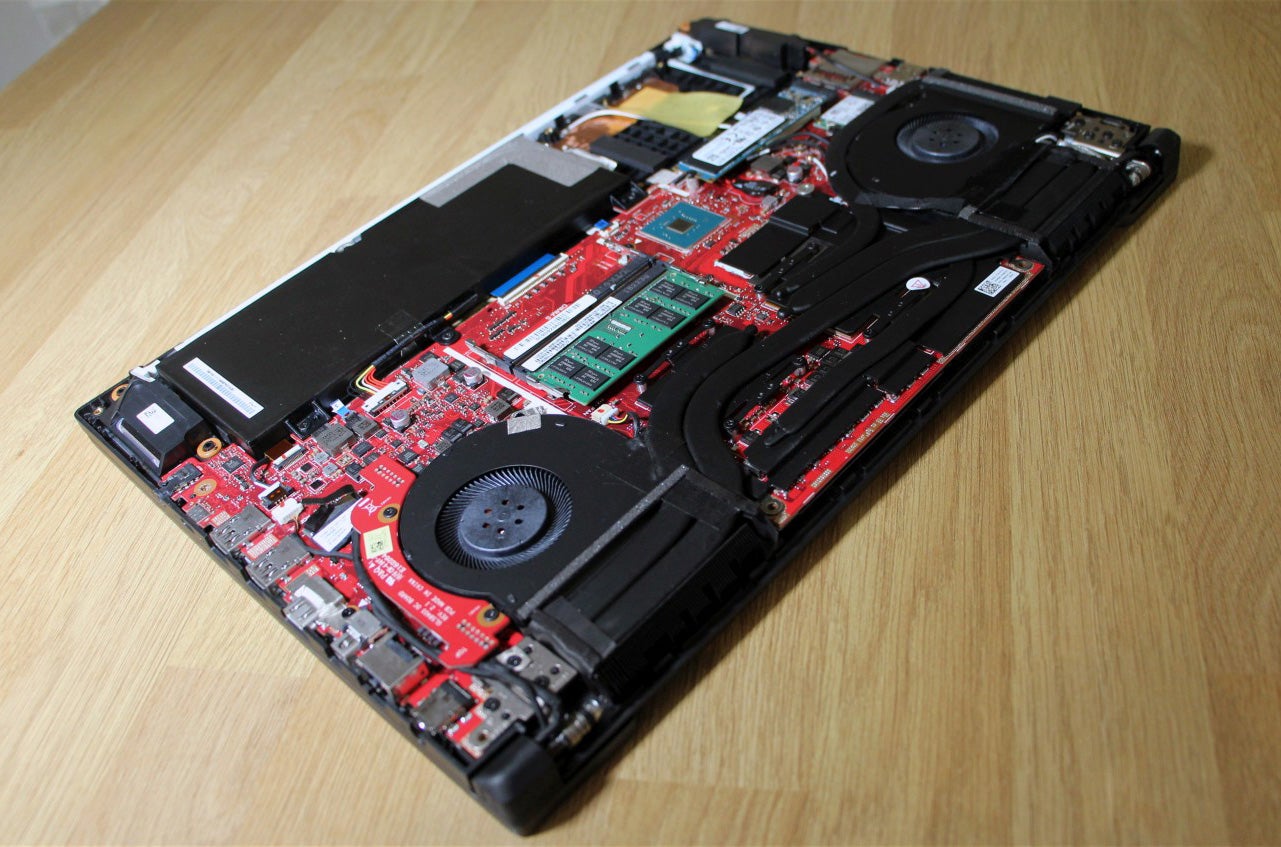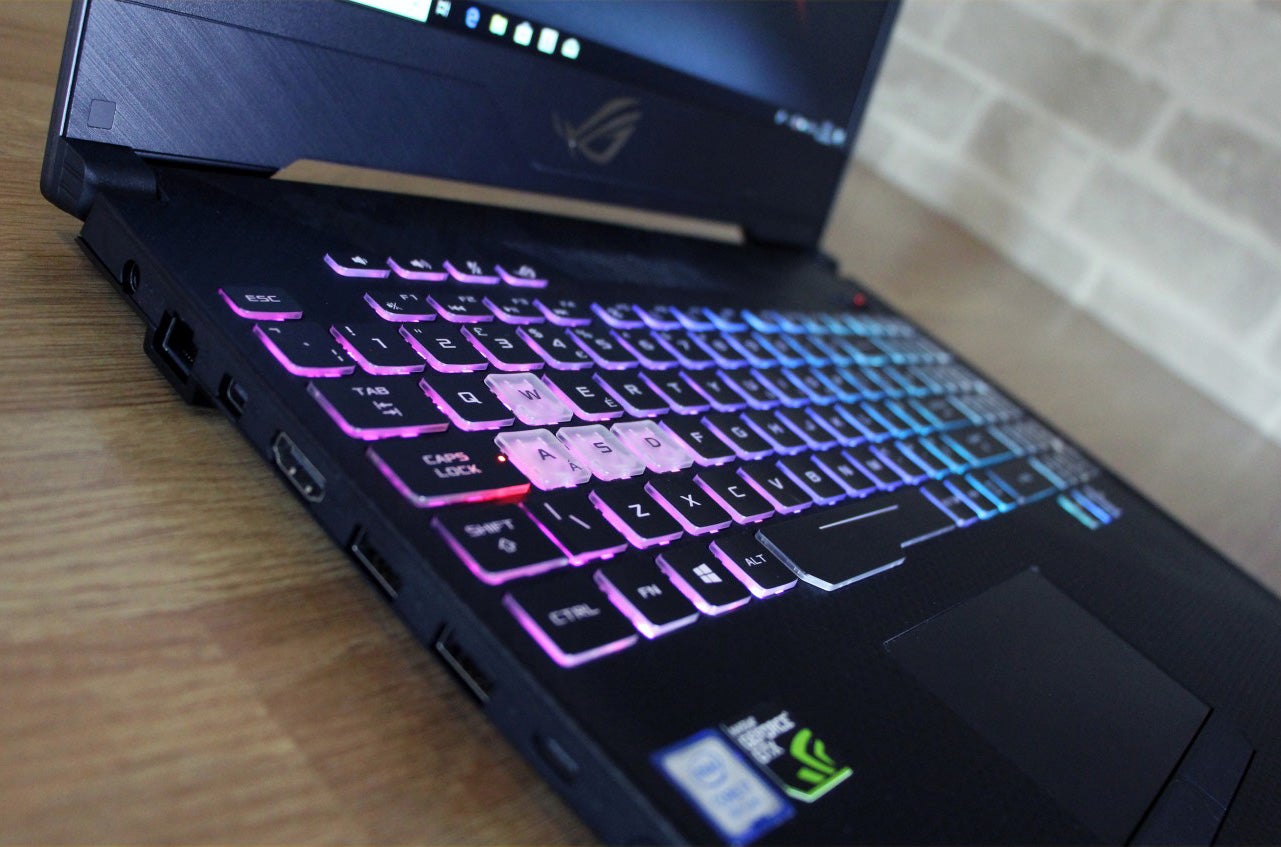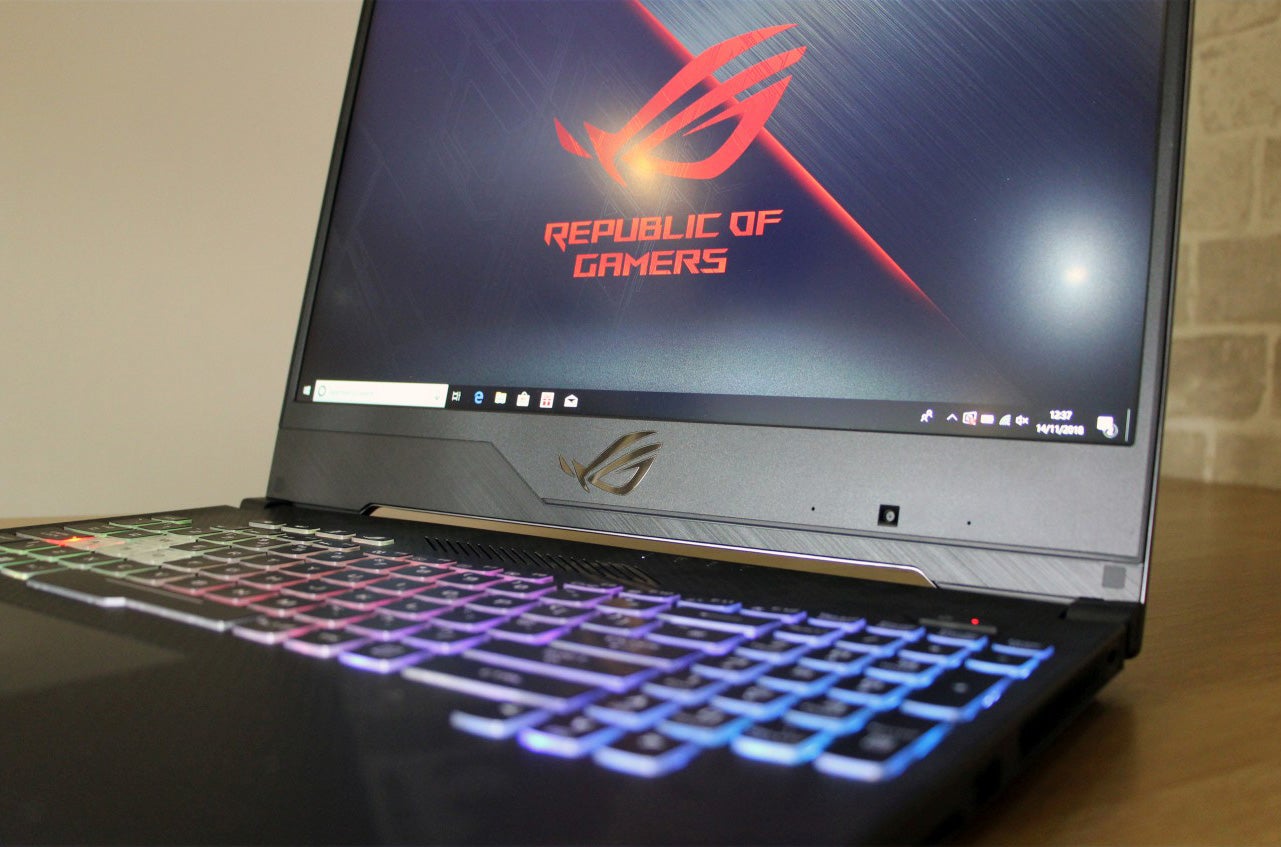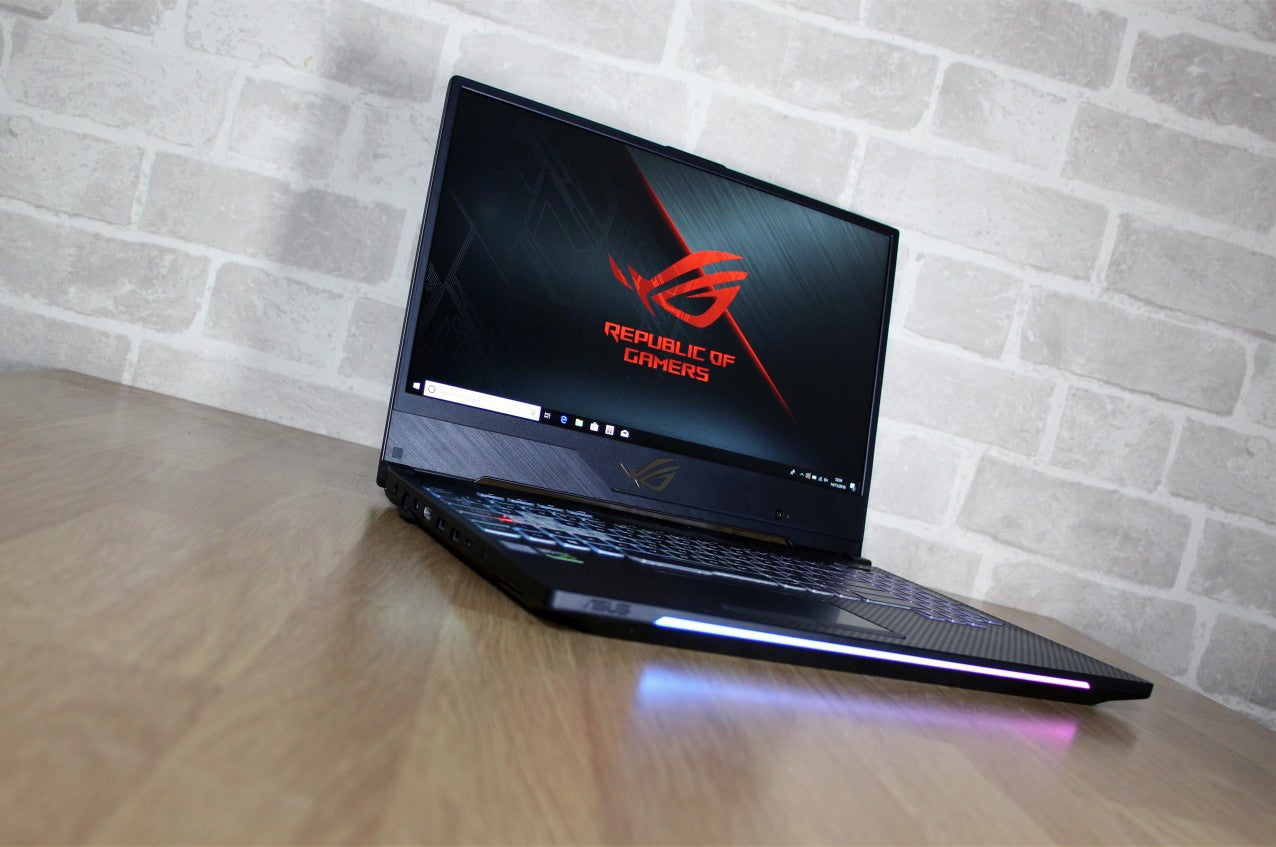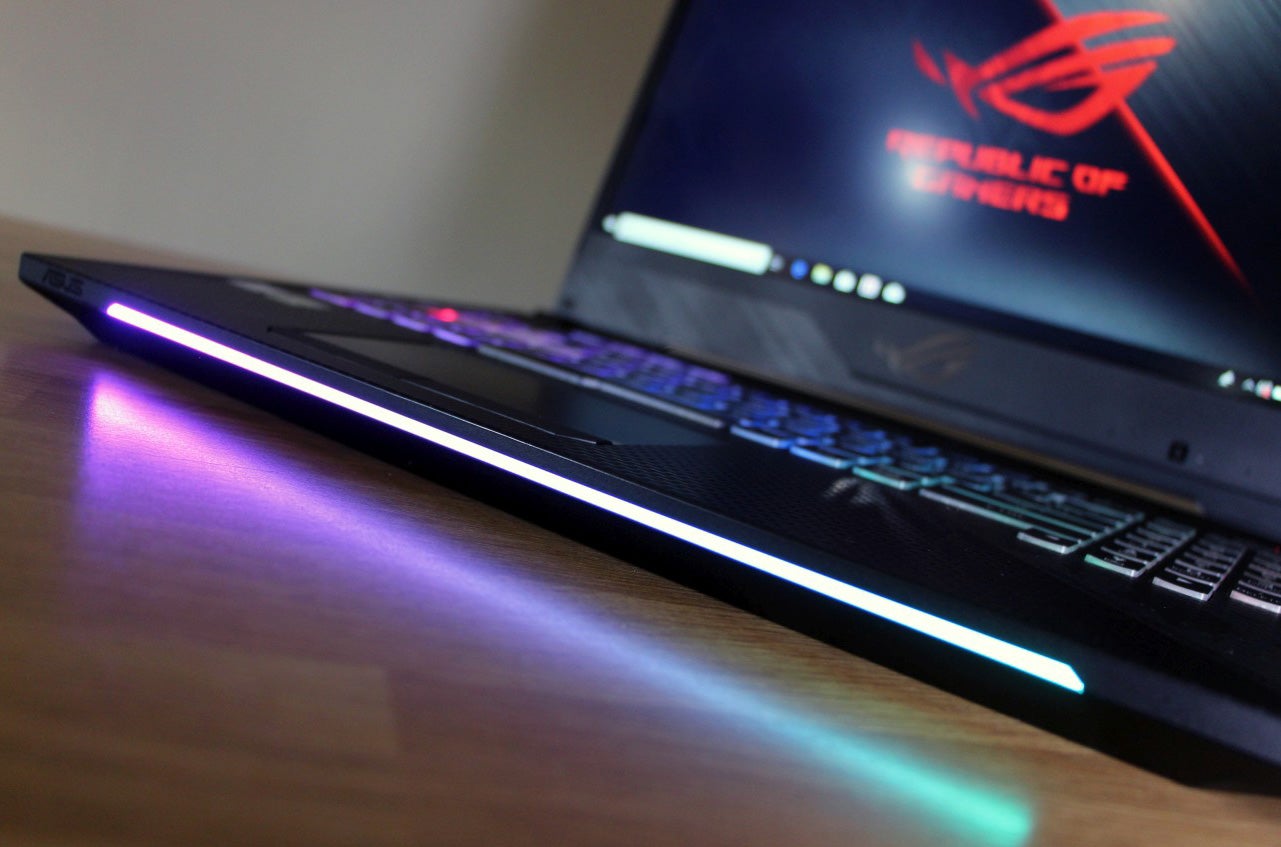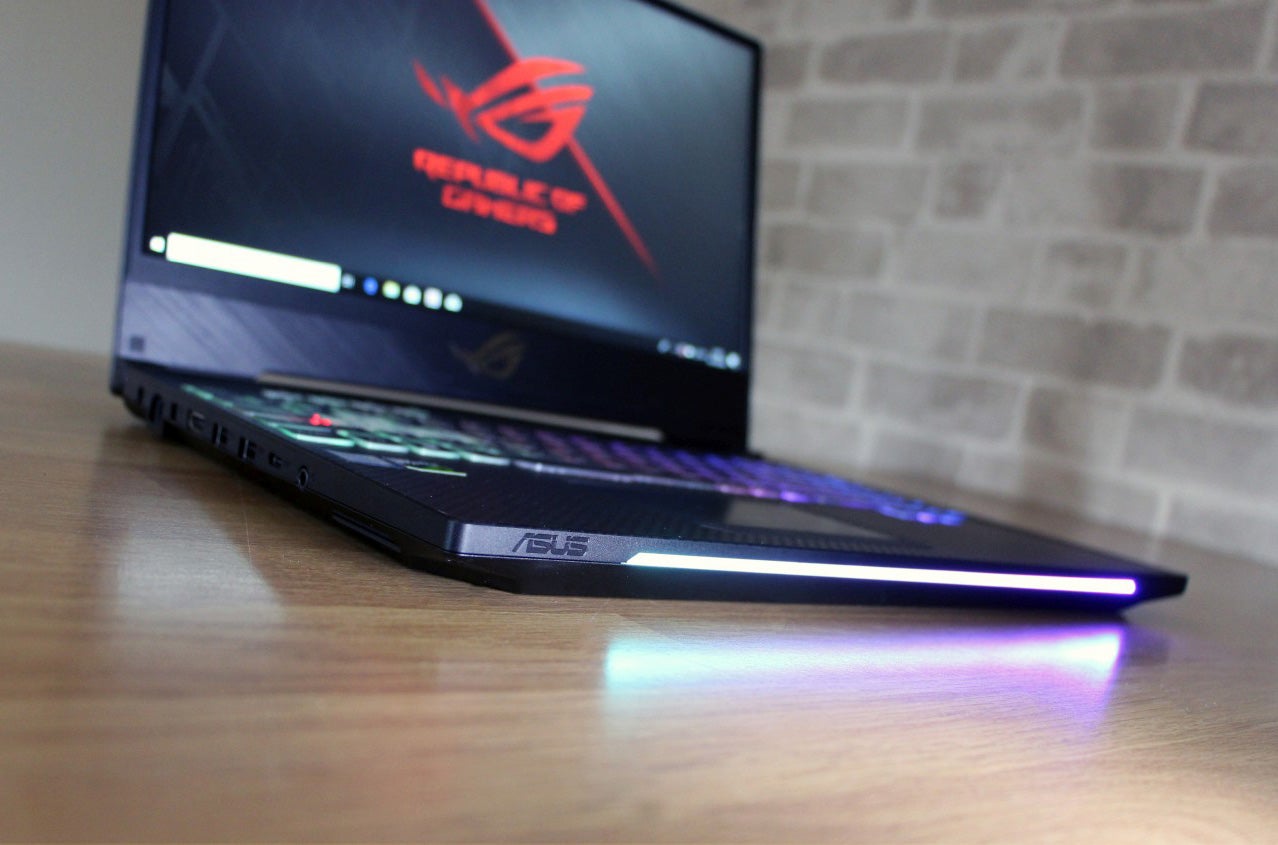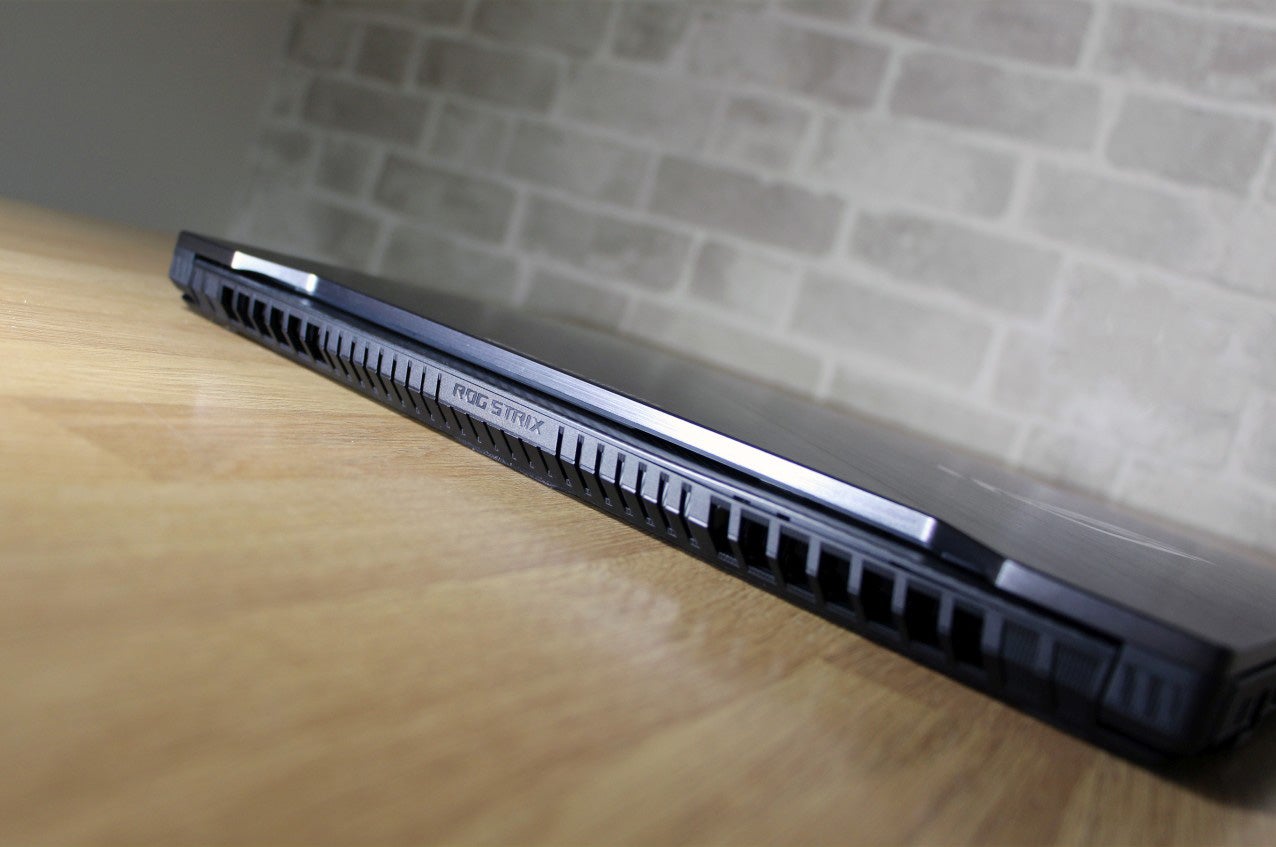Asus ROG Strix Scar II Review
Asus ROG Strix Scar II
A 144Hz screen, stunning keyboard and loads of power
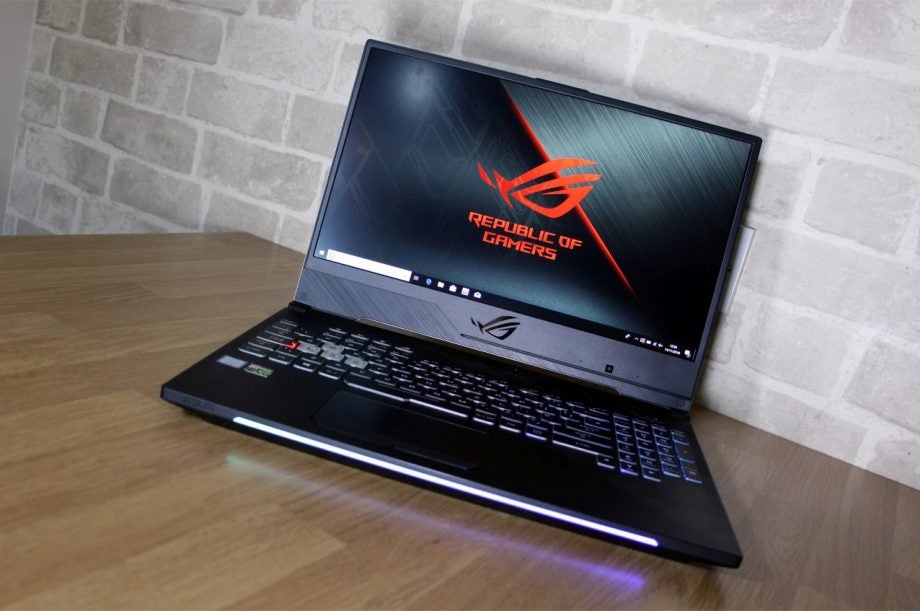
Verdict
Great performance, loads of features and keen design – an excellent, well-rounded contender
Pros
- Impressive, consistent speeds
- High-quality 144Hz screen
- Excellent keyboard
- Sturdy, good-looking design
Cons
- Underwhelming battery life
- Poor speakers
- Can't always exploit 144Hz screen
Key Specifications
- Review Price: £1800
- 2.2GHz Intel Core i7-8750H processor
- Nvidia GeForce GTX 1070 8GB graphics
- 15.6in 1,920 x 1,080 144Hz screen
- 16GB DDR4 memory
- 512GB Toshiba XG3 SSD
- Windows 10 64-bit
- 2yr RTB warranty
The Asus ROG Strix Scar II is a gaming laptop that packs in plenty of portable power – alongside features that have been borrowed from the world of desktop gaming.
The combination of desktop features and laptop power is an intriguing proposition, especially for playing the latest titles at high refresh rates. But is it worth £1800 in the face of strong competition?
Asus ROG Strix Scar II – Design and Build
The lid is made from brushed aluminium, and the area around the keyboard and trackpad is divided between a carbon-fibre pattern and a camouflaged area made from different shades of grey. There are smart exhaust ports at the rear, and the screen’s bezel is pleasingly tiny.
The dark metal is augmented with a surprising number of RGB LEDs. A wide bar across the front of the machine can be configured, along with the lid’s ROG logo. The keyboard’s lighting can be altered in four zones and different lighting effects can be deployed.
It’s the same lighting that you’ll find on the Asus ROG Strix Hero II. That laptop – from the same range as the Asus ROG Strix Scar II – has the same body but at a cheaper price since its lesser specification is designed for MOBA games.
The lighting and brushed metal certainly make the Scar stand out more than its rivals. The stunning Razer Blade 15 has a black metal chassis and a glowing green lid, but no RGB LEDs. The Gigabyte Aero 15 is just as dark.
The Scar tips the scales at 2.4kg, and it’s 26mm thick. Those are the same dimensions as the other Asus machine. However, the Asus is bulkier than its other rivals: the Razer and Gigabyte systems weigh barely more than 2kg, and they’re 16.7mm and 19mm thick.
Saying that, the dimensions aren’t ruinous – especially for a gaming laptop. The Scar’s build quality is great too: the screen and its slim bezels feel sturdy, and the main bulk of the machine is strong. I’d always use a sleeve to protect a laptop’s good looks, but this machine will certainly survive frequent travel.
The Asus has solid connectivity and internal access. You’ll find the usual three USB 3.1 ports, a Type-C connector and an SD card reader. The base panel lifts away to reveal access to all of the major components and a spare memory slot.
The machine is managed by the Asus Gaming Center app. It’s a little too flashy – all bright graphics and huge dials – but it does a decent job of displaying key settings. The tool serves up all of the key clock speeds and temperatures alongside shortcuts to screen modes, audio options and gaming profiles. Android and iOS versions are available too.
Related: Best PC Games 2018
Asus ROG Strix Scar II – Keyboard & Trackpad
The keyboard is one area where Asus claims to break free from gaming laptop tropes – even though the Asus ROG Strix Scar II still uses a conventional chiclet design.
Asus says that the keyboard is based on desktop technology, which means its key-presses augment faster than normal laptop keys. The top of each button has a tiny 0.25mm depression on the surface for better grip, and the WASD keys stand out thanks to transparent plastic – just like the QWER keys on the Asus ROG Strix Hero II. You even get n-key rollover and full anti-ghosting.
The Scar does back up Asus’ claims about its speed and quality. The buttons hammer down with impressive speed, and they deliver great balance between the sharp snap needed for gaming and the comfortable action required for day-to-day use.
The buttons match their good speed with a consistent action, a quiet noise output and a firm base.
The Asus’ desktop-inspired typing gear works extremely well. If you’re playing mainstream games or certain esports titles then the Scar is easily good enough. It’s better than the Razer and Gigabyte keyboards, neither of which had quite as much travel or speed as the Scar.
However, this is still a chiclet keyboard, which means it still has issues in some scenarios. The buttons still don’t have the travel or weight of a proper mechanical keyboard, or the low-profile mechanical keyboards that some laptops use. The most enthusiastic and competitive players will notice the difference.
The layout has its foibles too. The numberpad and the cursor keys are all far too slim, and the Return key is only single height.
While the trackpad itself is good, the buttons push down too deep when compared to even cheap gaming mice. The buttons are on a hinge at the top, so their action isn’t consistent – it’s shallow and firm at the top but deep and spongy at the bottom.
The trackpad and buttons will do the job for casual gamers, but this is another area where keener players will want to default to a USB device.
Related: Best Gaming Keyboards
Asus ROG Strix Scar II – Screen & Sound Quality
The Scar is the first laptop to have a screen with a narrow bezel, a 144Hz refresh rate and a 3ms response time. That latter figure is great for competitive gaming, because it means that there’s less chance of ghosting as the action quickly moves around the screen. If you’re especially into esports or fast-paced games and want to play at a high standard, it’s a welcome addition.
The 144Hz refresh rate means games can run at up to 144fps and that the screen will be able to keep up when it comes to rendering frames.
That refresh rate is matched by the other Asus laptop and the Razer and Gigabyte machines, and it means that gaming will be smooth and fluid – and you’ll get better results as framerates head past 100fps and towards 144fps.
However, just like its rivals, the Scar doesn’t have any syncing technology – so the GPU’s frames won’t be perfectly synchronised to the screen’s refresh rate. That’ll mean a little less smoothness compared to laptops that do have syncing, but in real-world play gaming will still be very smooth on this laptop and the vast majority of players won’t notice the difference.
Beyond its game-friendly features, the Asus has solid quality levels. Its brightness level of 331 nits is good for all situations, and the black level of 0.26 nits is solid. They combine for a measured contrast of 1,273:1. That’s high enough to ensure vibrancy and depth across the whole range and in all gaming and movie-watching situations.
That contrast figure is better than the Razer, which means the Scar’s screen will have more punch than the Blade 15.
However, the Scar’s colour results are more ordinary. The screen’s temperature of 6773K is a little cool, and its Delta E of 4.58 is middling. The Scar’s sRGB gamut level of 84.6% is fine – anything over 80% is reasonable – but it’s lower than the Razer and Gigabyte. Razer’s machine also had better colour temperature.
None of the Scar’s colour results are particularly good, but they’re not a deal breaker – games will still look excellent on this screen, especially thanks to the great contrast and black levels.
The Scar’s panel isn’t perfect, but it is very good, especially for gaming. The 3ms response time and 144Hz refresh rate make gaming fast and smooth even without the lack of syncing, and contrast is excellent. In other benchmarks, results are comparable with rivals.
The screen may be good, but the speakers are not. They’re loud, but they have little bass and the rest of the range is muddy. Attach a headset or external audio kit.
Related: The Best Multi-Room Speakers
Asus ROG Strix Scar II – Performance
The Asus ROG Strix Scar II’s graphical grunt comes from the full-power mobile version of the GTX 1070. It may now be behind the times, but this Pascal-based part still has plenty of life in it: this GPU has 2,048 stream processors, 8GB of GDDR5 memory and a 1443MHz core that boosts to 1645MHz.
On paper, it’s far more powerful than the Asus Hero and Gigabyte machines, which have the weaker GTX 1060 core with 6GB of memory. The Scar should also outpace the Razer, which had the cut-down Max-Q version of the GTX 1070.
Theoretical tests illustrate the Scar’s lead over its rivals. Its 3D Mark Fire Strike score of 14,413 is almost 3000 points ahead of the Razer Blade 15 and more than 4000 points beyond the two machines with GTX 1060 graphics.
That lead translated to impressive Full HD scores in real-world gaming. It blasted through Shadow of Mordor with a 127fps average with the game running at Ultra, and got to 104fps in Dirt Rally. In more demanding games it returned playable framerates: 71fps in Shadow of the Tomb Raider and 44fps in Ghost Recon: Wildlands.
That Ghost Recon score is about ten frames better than the GTX 1060, and the Tomb Raider result is twice as good as the GTX 1060.
The Scar outpaces rivals, and has enough speed to play any big-name game at playable frame rates at 1080p and with high quality settings. It also has the ability to output to VR headsets and higher-resolution screens, but not 4K.
However, there are still complications. While this laptop will play any game smoothly, it doesn’t necessarily have the power to run today’s most demanding titles at 100fps and beyond – and that kind of pace is where you’ll get the most benefit out of the screen’s 144Hz refresh rate.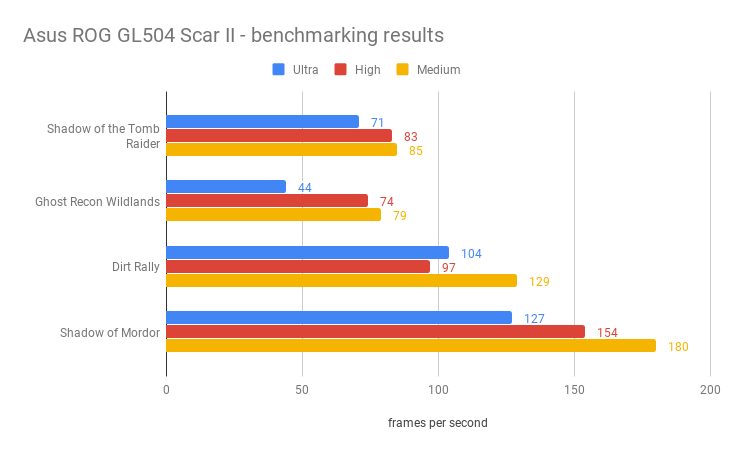
Esports games and older titles will easily achieve those speeds, of course. But if you want to play particularly demanding games like Shadow of the Tomb Raider and Ghost Recon: Wildlands at a triple-figure frame rate, you’ll have to have the graphics running at Medium settings rather than Ultra or Very High.
The GTX 1070 is supported by a Core i7-8750H processor. This is the most affordable high-end laptop CPU from Intel’s Coffee Lake range, which means it’s appearing in all sorts of machines right now including the Razer, Asus ROG Hero II and Gigabyte laptops.
The i7-8750H has six Hyper-Threaded cores which can address twelve concurrent threads. That gives it an instant leg-up on the quad-core chips that are still found in many notebooks. It’s no slouch on clock speeds, either: it starts at 2.2GHz and boosts to 4.1GHz.
The new core competes with rivals in benchmarks. Its single-core Geekbench result of 4,664 is marginally behind other machines, but its multi-core result of 18,099 beats every other contender.
The Scar’s PC Mark 10 result of 5630 and PC Mark 8 score of 5411 beat the Razer (4434) and Gigabyte (3533) machines respectively.
| Asus ROG Strix GL504 Scar II | Asus ROG GL504 Hero II | Razer Blade 15 | Gigabyte Aero 15 | |
| Geekbench 4 single-core | 4664 | 4670 | 4873 | 4876 |
| Geekbench 4 multi-core | 18099 | 17092 | 17823 | 17416 |
| PC Mark 10 | 5630 | 3169 | TBC | TBC |
| CrystalDiskMark read | 2229 MB/s | 1291.5 MB/s | 3224 MB/s | 1500 MB/s |
| CrystalDiskMark write | 1237 MB/s | 248.9 MB/s | 1125 MB/s | 1200 MB/s |
| Fire Strike | 14413 | 11015 | 11624 | 12894 |
The processor bodes well for all sorts of situations. No games will be bottlenecked, and day-to-day computing and multi-tasking will be handled easily. The Asus will run photo-editing and content-creation tools without struggling, so this machine can double up as a work laptop.
The Asus’ thermal performance is middling. Internal temperatures are fine and the exterior remained cool. However, the Asus does pump out a noticeable amount of noise during intensive gaming sessions. It’s better than the Razer, but there’s still a fair amount of fan noise.
Related: Best Gaming Mice
The SSD’s read and write speeds of 2229MB/s and 1237MB/s are solid – not record-breaking, but not slow either.
There’s no secondary hard disk, which means limited room for installing games – a minor irritation. And, while, there’s 16GB of memory, it’s installed in single-channel configuration. That will have impacted performance, and it explains why the Scar’s single-threaded benchmarks are behind rivals.
Don’t expect much longevity from this machine, either. In an application test the Asus lasted for nearly two hours, and it ran for almost three in Powermark – but that fell to around an hour in a gaming benchmark.
That’s about level with most gaming laptops, and it means that you’ll have to plug in if you want to enjoy a prolonged gaming session.
Related: Best Gaming Monitors 2018
Should I Buy the Asus ROG Strix Scar II?
The Asus ROG Strix Scar II is excellent. The GTX 1070 GPU and Core i7 processor deliver ample power in almost every scenario, and more grunt than most rivals – including Asus’ own cheaper, esports-friendly Hero machine.
The rapid-response screen offers good features and quality – even if the lack of G-Sync deals a minor blow. The keyboard is one of the best I’ve used on a gaming laptop, and the design and build quality are excellent.
The battery life and noise results aren’t great, but that’s hardly a surprise on a gaming machine. The Scar II is a little expensive, too.
However, if you’re after a well-rounded gaming laptop with good features and design, it doesn’t get much better than this.
Verdict
The Asus ROG Strix Scar II delivers plenty of power, a high-quality screen, good design and plenty of game-friendly features. It can’t quite deliver 144Hz-friendly frame rates in all games, but it’ll handle the vast majority of gaming scenarios with skill and speed. It’s a very impressive option if you want a well-rounded gaming portable.
How we test laptops
Unlike other sites, we test every laptop we review thoroughly over an extended period of time. We use industry standard tests to compare features properly. We’ll always tell you what we find. We never, ever, accept money to review a product.


